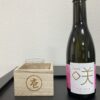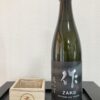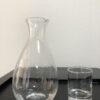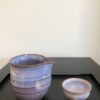How to reserve Japanese Sake
It is well-known how to reserve wine. It should be reserved in the dark and humid place. Temperature should be 10~15℃. Compared to how to reserve wine, it is less popular how to reserve Japanese Sake. The way is stricter than that of wine. It should be reserved under 0℃. And, sunlight must be avoided. You cannot reserve in freezers because it is too cold. Japanese Sake will freeze if it is reserved under -7℃. The temperature is under -15℃~-20℃ in freezers.
It is difficult to reserve Japanese Sake under 0℃ at your home. So, I would like to introduce the easier ways in this article. How to reserve depends on the type of Japanese Sake.
Table of Contents
Normal label and Junmai-Shu
You can reserve it at room temperature. What makes Japanese Sake worse is Lactic bacteria. Normal label and Junmai-Shu are released after pasteurized twice. Because the process kills Lactic bacteria, it doesn’t get worse at home temperature. However, you must avoid sunlight.
Nama-Zake
It must be reserved in under 5℃. Refrigerators are the good place to reserve. The temperature is kept in 2~5℃. However, it is not enough cold to reserve for a long time. When you buy Nama-Zake, you should enjoy it at least in a month. Because Lactic bacteria lives in it, they will get Nama-Zake worse.
Dai-Ginjo-Shu and Ginjo-Shu
It should be reserved in under 10℃. You can reserve them in wine cellars. What you have to care is Japanese Sake bottles should be reserved upright. It is said if you reserve it lying, it accelerates oxidizing. And, as the cap of Japanese Sake is not sealed strongly, it sometimes leaks.
Conclusion
The best place of reserving is in refrigerators at your home. Although you can reserve it for a while, it is better you enjoy it soon. Japanese Sake is not brewed for reserving for a long time. Japanese Sake is released to be enjoyed in a year. Of course, you can enjoy Japanese Sake reserved more than a year. Buy, you must understand that the taste has changed from what breweries imagine.




